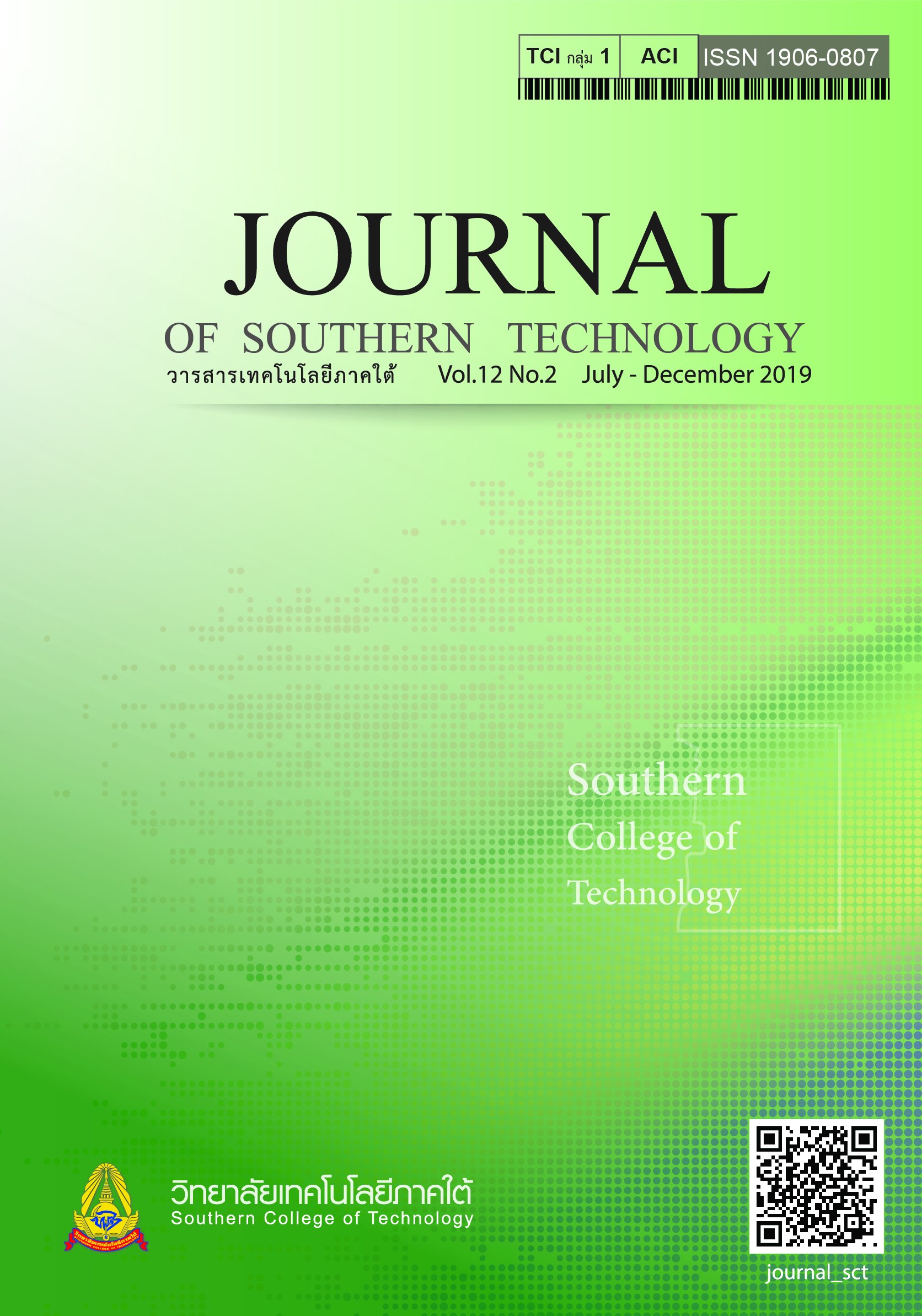Development of Health Tourism Management Model of Nakhon Si Thammarat
Main Article Content
Abstract
This qualitative research aimed to 1) study current of visions, policy, planning strategies and colla-
borative activities from public and private sectors, 2) investigate the current health tourism management
models of Nakhon Si Thammarat, and 3) offer the health tourism management recommendation a models
in the form of consortium network to be prepared Nakhon Si Thammarat becoming a health tourism center
in the upper south. Samples included from a tourism consortium network of Nakhon Si Thammarat, the
selection of samples was unstructured to meet the research objectives while considering individual jobs
and responsibilities from 50 organizations as criteria. Both interview and focus-group participants were
selected through purposive sampling. One participant was selected from each of the 50 organizations
for the interviews and 30 participants of these were selected for the focus group. Research revealed that
no record was identified for Nakhon Si Thammarat in relation to visions, health tourism strategies and
health tourism management model. There was an evidence for jointly work as a consortium network via
nonverbal agreement at a cooperation level. The comparison among Nakhon Si Thammarat and provincial
group in the upper south in terms of health tourism consortium network model comprised 2 main parts,
the collaboration of 4 components by SAPA model; a cycle that requires a sequence of steps consisting
of 4 elements included 1) Sources of governing bodies (S), 2) Actions from local to regional level (A),
3) Production and development (P) and 4) Assessment (A), and the tourism demand and supply management.
It was found that Nakhon Si Thammarat province has a complete and all needed components in health
tourism management model. Four factors of TMBC model included 1) Trust (T), 2) Mobilization (M), 3) Benefit
(B) and 4) Communication (C), was also applied as a key success factor as well as 3 steps of operational
process as follows. 1) Using strategies for development of health tourism to promote. 2) Presenting infor-
mation to integrate provincial cluster committee, East Coast Southern Subregion to be accepted from 6
provinces of the upper south through the chief administrative of Nakhon Si Thammmarat office and the
governor to add this agenda in the meeting. And 3) allocating roles, function/responsibility, network colla-
boration, operation period, then Nakhon Si Thammarat should be a prototype and further develop to be
a center of health tourism management in the upper south.
Article Details
-
Authors must agree to the journal publication rules and allow the editors to edit the manuscripts for publication.
-
Author’s right belongs to the author but Journal of Southern Technology holds the right of first publication and thus allow readers to use the article for the purpose of education but not commercial.
References
Angsukanchanakun, C. (2014).The tourism managerial model for sustainable community floating market in the lower central region. Dusit Thani College Journal, 8, 48-67. [In Thai]
Boon-Suay-Kwan, R. (2014). Social Management: Public Organization Management, Social Organization Management, Non-state Organization Management, Organization for Social Movement. Bangkok: Political Science Association of Kasetsart University. [In Thai]
Borgatti, S. P., & Halgin, D.S. (2011). On Network Theory. Organization Science: Articles in Advance, 1-14.
Czajkowski, J. M. (2007). Leading Successful Interinstitutional Collaborations Using the Collaboration Success Measurement Model. Paper Presented at the Chair Academy 16th Annual International Conference, Jacksonville Florida.
Hanneman, R.A., & Riddle, M. (2005). Introduction to Social Network Methods. Riverside, CA.: University of California, Riverside.
Jutanil, S. (2013). Network Administration of the Community Organizations Development Institute in the Northeast of Thailand. M.P.A. Thesis, Faculty of Public Administration, National Institute of Development Administration. [In Thai]
Katz, N., Lazer, D., & Contractor, N. (2004). Network theory and small groups. Small Group Research, 35(3), 307-332.
Linden, R. (2002). A Framework of collaborating. The Public Manager, 31(2), 3-6.
Ministry of Tourism and Sports. (2015). Thai Tourism strategy, 2015-2017. Retrieved July 2, 2016, from https://www.mots.go.th/ewt_dl_link.php?nid=7100. [In Thai]
National Research Organization Network. (2016). Research Framework for the Fiscal Year 2017. Bangkok: Chulalongkorn University Publisher. [In Thai]
Phongphit, S. (2005). Network: Strategies for Intensive Communities Strong Community. Bangkok: Community Enterprise Promotion Institute. [In Thai]
Phonsri, S. (2007). Learning Network in Community Development Work. Bangkok: O.S. Printing House. [In Thai]
Phothisita, C. (2016). Science and Art of Qualitative Research. (7th ed.). Bangkok: Amarin Printing and Publishing. [In Thai]
Phuwanatwichit, T., Khomthananat, P., & Srirat, S. (2015). Community Tourism Management for ASEAN Economic Community (AEC) Preparation (Research Report). Supported by the National Research Council of Thailand (NRCT) & Thailand Research Fund (TRF). [In Thai]
Rattanapan, K., Ninlaor, N., Jewton, B., & Rattanapan, W. (2019). The guideline for ecotourism development in Lay Kao Kob Cave, Trang. Journal of Southern Technology, 12(1), 1-9. [In Thai]
Starkey, P. (1997). Network for Development. IFRTD (The International Forum for Rural Transport and Development), London, UK : International.
Thai News PBS. (2017). The Cleanest Water Source in Thailand. Retrieved June 11, 2017, from https://news.thaipbs. or.th/clip/15614. [In Thai]
Tourism Authority of Thailand. (2001). General Knowledge about Homestay. Bangkok: Tourism Authority of Thailand. [In-Thai]
. (2016). 12 Cities Must Not Miss Plus. Retrieved July 7, 2016, from https://2baht.com/12-cities-hidden-gems-plus/. [In Thai]
Wattanavarangkun, K. (2016). Academic Conference and Press Conference on Economic Report Travel, No. 3, Rama Gardens Hotel, May 23, 2016. [In Thai]
Wei-Skillern, J., & Silver, N. (2013). Four network principles for collaboration success. The Foundation Review, 5(1), 121-129.
World Tourism Organization. (2015). UNWTO Annual Report 2014. Madrid.

